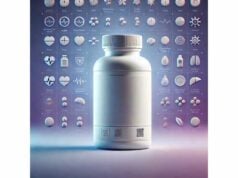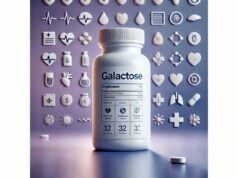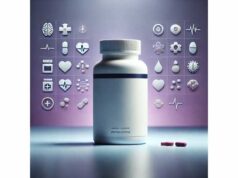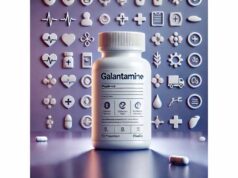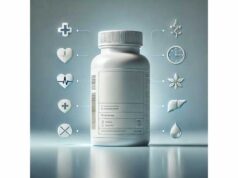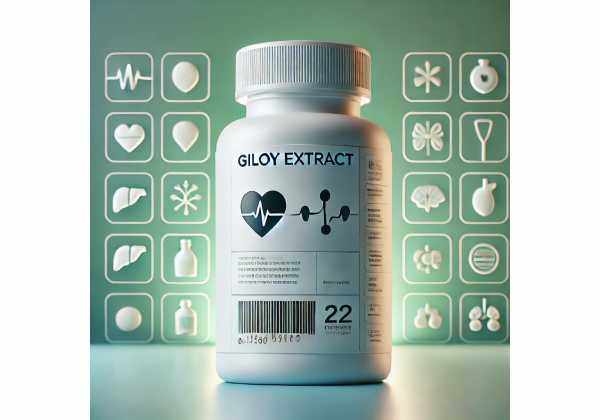
Giloy (Tinospora cordifolia) is a woody vine long used in Ayurveda and increasingly sold as capsules, tinctures, powders, and standardized extracts. People reach for it to support immunity, ease allergy-like symptoms, and help with recovery from infections or fatigue. Early human research suggests symptom relief for allergic rhinitis in particular, while a broader body of laboratory work points to immune-modulating and anti-inflammatory actions. At the same time, case series and multicenter reports have linked prolonged or high-dose use to rare but sometimes severe liver injury—especially in people with underlying liver or autoimmune disease. This guide brings together what is known (and not yet proven) about giloy extract so you can decide if it fits your goals. You will find clear benefits, practical how-to guidance, realistic dosage ranges, and safety rules to use it carefully and responsibly.
Essential Insights
- May reduce sneezing, discharge, and congestion in allergic rhinitis; broader immune effects remain uncertain.
- Rare but serious liver injury has been reported; stop and seek care for jaundice, dark urine, or persistent nausea.
- Typical modern dose: 400–1,000 mg/day of standardized extract; trial dosing: 300 mg three times daily.
- Avoid if you have chronic liver disease, autoimmune disorders, are pregnant or breastfeeding, or take immunosuppressants.
Table of Contents
- What is giloy extract and how it works
- What benefits are supported in humans
- How to use giloy extract correctly
- How much giloy extract per day
- Safety, side effects, and who should avoid it
- Research at a glance: what we know and what we do not
What is giloy extract and how it works
Giloy (Tinospora cordifolia), also called guduchi or “heart-leaved moonseed,” is a climbing vine native to South Asia. In traditional Ayurveda, preparations of the stem, and less often the leaves or roots, are used in Rasayana (rejuvenating) formulas, fever management, and convalescence. Modern supplements typically contain an aqueous or hydro-alcoholic stem extract standardized to marker compounds (often labeled as “bitters” or clerodane furanoditerpenoids) and manufactured as capsules, tablets, or tinctures. Some products also offer “satva,” a concentrated water extract, or crude powders.
Mechanistically, giloy is best described as an immunomodulator rather than a blanket “immune booster.” In preclinical studies, extracts influence innate and adaptive pathways, including macrophage activation, phagocytosis, and cytokine signaling; they have also demonstrated antioxidant and anti-inflammatory effects. These actions may help explain reports of symptom improvements during allergic rhinitis (where dampening inflammatory cascades can reduce nasal symptoms). Importantly, immunomodulation can cut both ways: the same immune-activating tendencies may, in susceptible people, unmask autoimmune phenomena. That possibility underlies the caution you will see later regarding autoimmune-like hepatitis linked to prolonged giloy use.
Giloy’s chemistry is complex. Extracts contain dozens of alkaloids, terpenoids (notably clerodane furanoditerpenoids such as tinosporaside and cordifolide), phenolics, and polysaccharides. Product labels rarely list exact constituents, so consumers usually rely on standardization claims (e.g., percentage of “bitters”) and third-party testing to infer consistency. Because the genus Tinospora includes several look-alike species used in folk medicine, correct botanical identification matters. Most reputable manufacturers specify Latin binomial, plant part (stem), extraction solvent, and extract ratio (for example, “10:1 aqueous extract”), which together give you clues about the dose needed to match a studied preparation.
Two practical implications follow. First, effects are preparation-dependent: an aqueous stem extract standardized to certain markers will not be equivalent to raw powder or a tincture made from mixed plant parts. Second, quality assurance helps mitigate misidentification risks; some safety debates have centered on whether mislabeled species or adulterants contributed to adverse events. Choosing transparently labeled, tested products is a key part of using giloy responsibly.
Finally, perspective: despite robust traditional use and promising lab biology, the human evidence base remains narrow. A few small randomized trials and observational studies exist for specific outcomes; otherwise, claims are extrapolated from preclinical data. That is why this guide separates what is reasonably supported in people from what is hypothesis-generating.
What benefits are supported in humans
When you look past general marketing language and focus on outcomes tested in people, giloy’s best-documented potential benefit is symptom relief in allergic rhinitis. In a randomized, double-blind, placebo-controlled trial, adults taking an aqueous stem extract reported meaningful reductions in hallmark symptoms—sneezing, nasal discharge, itching, and obstruction—over eight weeks. Objective measures (nasal smear cytology, leukocyte counts) aligned with clinical improvements. This does not mean giloy replaces established therapies like intranasal steroids or antihistamines, but it suggests a role as an adjunct when symptoms persist or when people seek botanical options. If you try it for this purpose, monitor symptoms weekly and reassess at 8–12 weeks.
Beyond allergies, modest human data explore immunomodulatory effects in specific contexts. In a randomized trial among people living with HIV, the same basic dosing schedule (300 mg three times daily) led to self-reported symptom improvement, though changes in key lab markers were inconsistent and gastrointestinal side effects were noted more frequently than with placebo. A handful of open-label or small controlled studies and case series in other conditions (e.g., wound healing, metabolic parameters) hint at possible benefits, but designs are limited and results mixed. At present, there is not strong, consistent evidence that giloy improves blood sugar control, reduces major infection rates, or alters long-term disease outcomes.
What about general “immune support” or “resilience” during cold and flu season? The science here rests mostly on preclinical findings. While macrophage activity and cytokine profiles shift in a direction that could plausibly enhance first-line defense, direct human evidence for fewer colds, shorter illness durations, or better vaccine responses is lacking. If you choose giloy for “immune health,” treat it as an experiment with clear guardrails: set a concrete goal (for instance, fewer days of nasal congestion during a defined period), use a standardized extract and consistent dose, and decide in advance how you will judge success.
Three caveats help keep expectations realistic. First, benefits tend to emerge gradually (over weeks), not overnight. Second, giloy is not disease-specific; its value, where present, comes from modifying broad inflammatory and immune pathways, so effects vary widely by person and context. Third, high-quality replication is limited; a single positive trial should be followed by larger, independent studies before firm conclusions are drawn.
If you are weighing giloy against other evidence-supported options, match tool to task. For allergic rhinitis, guideline-supported therapies remain first-line. Consider giloy only as an add-on if you tolerate it well and have no liver, autoimmune, or pregnancy-related contraindications. For other goals, be candid with yourself about the current uncertainty and the safety section that follows—especially if you are contemplating longer courses or higher doses.
How to use giloy extract correctly
Start with clarity: why are you taking giloy, what outcome will define success, and when will you stop if it does not help? That mindset protects you from open-ended use—important because most safety signals have appeared after weeks to months of continuous intake, particularly in people with underlying liver or autoimmune conditions.
- Choose the right form. Prefer a single-herb, standardized aqueous stem extract from a brand that discloses the Latin name (Tinospora cordifolia), plant part (stem), extraction solvent, extract ratio, marker standardization (e.g., percent “bitters”), and lot-specific testing. Avoid unlabeled blends or products that do not list Latin binomial and part used. If a product uses “satva” (a concentrated water extract), treat it as potent and adhere strictly to labeled dosing.
- Match dose to purpose. For allergic rhinitis, the studied regimen is 300 mg of aqueous stem extract three times daily. For general use, typical modern supplement labels recommend 400–1,000 mg per day of standardized extract, usually in divided doses. Begin at the low end, reassess after 2–4 weeks, and do not exceed the label without medical guidance.
- Timing and co-administration. Take giloy with food to minimize stomach upset. If you use other botanicals that affect immunity (e.g., ashwagandha, echinacea), introduce only one new product at a time so you can attribute effects and side effects. Separate from other new supplements or medications by at least several days.
- Duration and pauses. Try a planned course of 8–12 weeks for allergic symptom goals. If there is no clear improvement by then, discontinue. For any longer use, take planned breaks and monitor liver-related symptoms vigilantly (next section). Continuous, indefinite use is not advisable.
- Build a simple monitoring plan. Before starting, note your baseline: symptom scores (e.g., 0–10 congestion or itching), energy levels, and any digestive complaints. During use, track weekly. Seek medical advice promptly for dark urine, yellowing of the eyes or skin, persistent nausea, right-upper-quadrant abdominal pain, or unexplained fatigue—particularly if you have liver risk factors. If you have known liver disease, autoimmune conditions, or take immunosuppressants, consult your clinician first and consider baseline and follow-up liver enzyme testing.
- Watch for look-alikes and mislabeling. Misidentification of Tinospora species has been debated in the safety literature. While high-quality analyses have linked true T. cordifolia to liver injury in some cases, accurate botanical sourcing remains critical. Prefer products with third-party verification and clear species labeling; avoid foraged or home-brewed preparations unless you are expert in plant identification and preparation methods.
- Medication review. Bring all supplements, including giloy, to your clinician and pharmacist. Although definitive drug–supplement interaction data are limited, added caution is wise with hepatotoxic drugs, immunosuppressants (e.g., after organ transplant), and agents with narrow therapeutic windows. Diabetics should monitor glucose closely when changing regimens, as illness recovery and lifestyle shifts may confound blood sugar.
Use these steps to minimize risk and maximize the chance that you will know—quickly and confidently—whether giloy is helping the specific problem you want to solve.
How much giloy extract per day
There is no single, universally accepted giloy dose for all people and purposes. Instead, think in two tiers: (1) doses actually studied in humans for defined outcomes, and (2) typical modern supplemental ranges used in practice.
Studied regimen for allergic rhinitis. An aqueous stem extract at 300 mg three times daily for 8 weeks improved common symptoms in a randomized, placebo-controlled trial. If allergic symptom relief is your main goal, this is the most defensible starting point. Evaluate response weekly and stop if you do not see meaningful improvement by the end of the trial window.
Typical modern range. Across clinical monographs and safety compendia, a total daily dose of 400–1,000 mg of standardized extract is commonly cited for general use. When labels suggest “1–2 capsules daily,” they usually target this range. Start low (for example, 400–600 mg/day split with meals), observe for 2–4 weeks, and only titrate upward if you tolerate it well and have a clear benefit.
Traditional preparations. Classical Ayurvedic practice often uses decoctions or concentrated water extracts (“satva”) derived from the stem. Because preparation methods, plant part ratios, and concentrations vary widely, translating traditional measures into modern milligram equivalents is unreliable. If you choose traditional forms, do so under guidance from a qualified practitioner who can tailor dosing to your constitution, condition, and other medications.
Course length and cycling. For discrete goals (seasonal allergies), plan 8–12 weeks and re-evaluate. For open-ended “immune support,” avoid indefinite daily intake. Build in structured breaks (e.g., 2–4 weeks off after a defined course) and reassess whether benefits persist without continued use. Longer courses warrant medical supervision and, in at-risk individuals, liver function monitoring.
Special populations. Do not use in pregnancy or while breastfeeding due to insufficient safety data. Avoid in children unless a pediatric specialist recommends and supervises it. People with chronic liver disease, autoimmune disorders, or those on immunosuppressants should generally avoid giloy; if a specialist advises use, dose conservatively, keep courses short, and monitor closely.
What not to do. Do not assume that “more is better.” High or prolonged dosing has coincided with reported cases of autoimmune-like hepatitis. Do not combine multiple “immune” herbs at once when starting; you will not know which agent did what. Do not replace proven therapies for your condition with giloy unless your clinician agrees and monitors you.
Bottom line: anchor your dose to a specific goal, use standardized products, start low, and set a firm decision point to continue or stop based on results and safety.
Safety, side effects, and who should avoid it
Common tolerability. Short-term use of standardized giloy extracts is often well tolerated. The most frequently reported minor effects are gastrointestinal—nausea, abdominal discomfort, loose stools—as well as occasional headache or rash. Taking doses with food typically reduces stomach upset. If mild symptoms persist beyond a few days, pause and reassess.
Serious risks—liver injury. Multiple clinical reports, including a multicenter study spanning many hospitals, have described acute hepatitis with autoimmune features temporally associated with giloy use. Presentations have ranged from marked enzyme elevations to jaundice, with a latency of weeks to several months. Some individuals had unrecognized underlying liver or autoimmune disease, and in these people the course could be severe (acute-on-chronic liver injury). Most cases improved after stopping giloy, but the recovery period could be prolonged; rare fatalities have been described. The broad takeaway: although uncommon, giloy-associated liver injury is real and potentially serious.
Warning signs to stop immediately and seek care:
- Yellowing of the eyes or skin, dark urine, pale stools
- Persistent nausea or vomiting, right-upper-quadrant pain
- Extreme fatigue, poor appetite, unexplained itching
Higher-risk groups—best to avoid:
- Anyone with chronic liver disease, prior unexplained hepatitis, or heavy alcohol use
- Individuals with autoimmune disorders (e.g., autoimmune hepatitis, lupus), unless a specialist advises otherwise
- People on immunosuppressive therapy (transplant recipients, autoimmune treatment)
- Pregnant or breastfeeding women (insufficient safety data)
- Children without specialist guidance
Medication considerations. Definitive drug–herb interaction data are limited, but caution is warranted with drugs that stress the liver, require tight immune control (e.g., post-transplant regimens), or have narrow therapeutic indices. If you use anticoagulants, antidiabetics, or thyroid medications, coordinate care and monitor as recommended; new supplements and health changes can alter needs indirectly.
Product quality and misidentification. Safety debates have included whether some cases resulted from consuming the wrong Tinospora species or adulterated products. Regardless, well-documented cases implicate correctly identified T. cordifolia too. Your best protection is to choose brands with species-level labeling, part used (stem), extraction details, certificates of analysis, and independent testing. Avoid unlabeled mixtures and “home brews” sourced from unknown vines.
Practical safety plan. Before starting, review your history with a clinician if you have any liver, autoimmune, or complex medical conditions. During use, avoid alcohol excess, do not exceed label dosing, and set a strict stop date if no clear benefit. Seek medical evaluation promptly for the warning signs above. If you had an adverse liver event linked to giloy in the past, do not re-challenge.
Used thoughtfully, short courses of standardized giloy may be reasonable for select goals. Used casually, at high doses, or for long durations—particularly in higher-risk groups—the risk–benefit balance can tip the wrong way.
Research at a glance: what we know and what we do not
Most promising human signal: Symptom relief in allergic rhinitis with an aqueous stem extract (300 mg three times daily) over eight weeks. Improvements were clinically meaningful and aligned with objective nasal cytology findings. Replication in larger, multicenter trials would strengthen confidence and refine who benefits most (e.g., seasonal vs. perennial, eosinophilic phenotypes).
Suggestive but limited findings: Immunomodulatory effects in specific clinical contexts, such as symptom improvements in a small HIV trial. These studies are informative but underpowered and heterogeneous; they do not establish disease-modifying benefits or long-term outcomes.
Insufficient human evidence: Claims for broad antidiabetic, hepatoprotective, antiviral, or anti-cancer benefits remain largely preclinical. Small metabolic or inflammatory marker changes reported in exploratory studies need rigorous confirmation. At present, giloy should not be relied upon to treat chronic diseases or replace indicated medications.
Safety evidence: Since 2021, accumulating case series and a nationwide multicenter study have characterized giloy-associated drug-induced liver injury, often with autoimmune features. While debates continue about misidentification or adulteration in some cases, analyses also implicate correctly identified T. cordifolia. Key patterns include onset after weeks to months, hepatocellular enzyme elevations, positive autoantibodies in many patients, and improvement after withdrawal (sometimes with immunosuppressive treatment). This risk is low on a population level but non-trivial—and concentrated in susceptible individuals.
What to watch next:
- Dose–response and duration–risk relationships. Does risk rise sharply beyond certain daily amounts or after a fixed time window?
- Standardization and constituents. Which specific compounds correlate with benefit and with risk? Better characterized extracts could improve predictability.
- Comparative effectiveness. How does giloy as an adjunct compare with established therapies for allergic rhinitis in well-controlled, modern trials?
- Biomarker-guided use. Can baseline features (eosinophil counts, symptom clusters) predict responders and non-responders?
Bottom line: Giloy is neither a cure-all nor a plant to fear categorically. The current human evidence supports a cautious, targeted trial for allergic rhinitis symptoms in low-risk adults willing to monitor carefully. For broad “immune boosting” or chronic disease management, evidence is not yet compelling, and known safety concerns argue against long, unsupervised use.
References
- Tinospora – LiverTox – NCBI Bookshelf 2025 (Safety overview and typical dosing)
- Tinospora Cordifolia (Giloy)–Induced Liver Injury During the COVID‐19 Pandemic—Multicenter Nationwide Study From India 2022 (Multicenter study)
- Herbal Immune Booster-Induced Liver Injury in the COVID-19 Pandemic – A Case Series 2021 (Case series)
- Efficacy of Tinospora cordifolia in allergic rhinitis 2005 (RCT)
- Immunomodulatory effect of Tinospora cordifolia extract in human immuno-deficiency virus positive patients 2008 (RCT)
Disclaimer
This article is educational and is not a substitute for personalized medical advice, diagnosis, or treatment. Do not start, stop, or change any medication or supplement without discussing it with your qualified healthcare professional, especially if you are pregnant, breastfeeding, have liver or autoimmune disease, or take immunosuppressants. If you develop signs of liver injury (yellowing of eyes/skin, dark urine, persistent nausea), stop giloy immediately and seek medical care.
If you found this guide useful, consider sharing it on Facebook, X (formerly Twitter), or your favorite platform, and follow us for more evidence-based wellness articles. Your support helps us continue creating high-quality resources.


